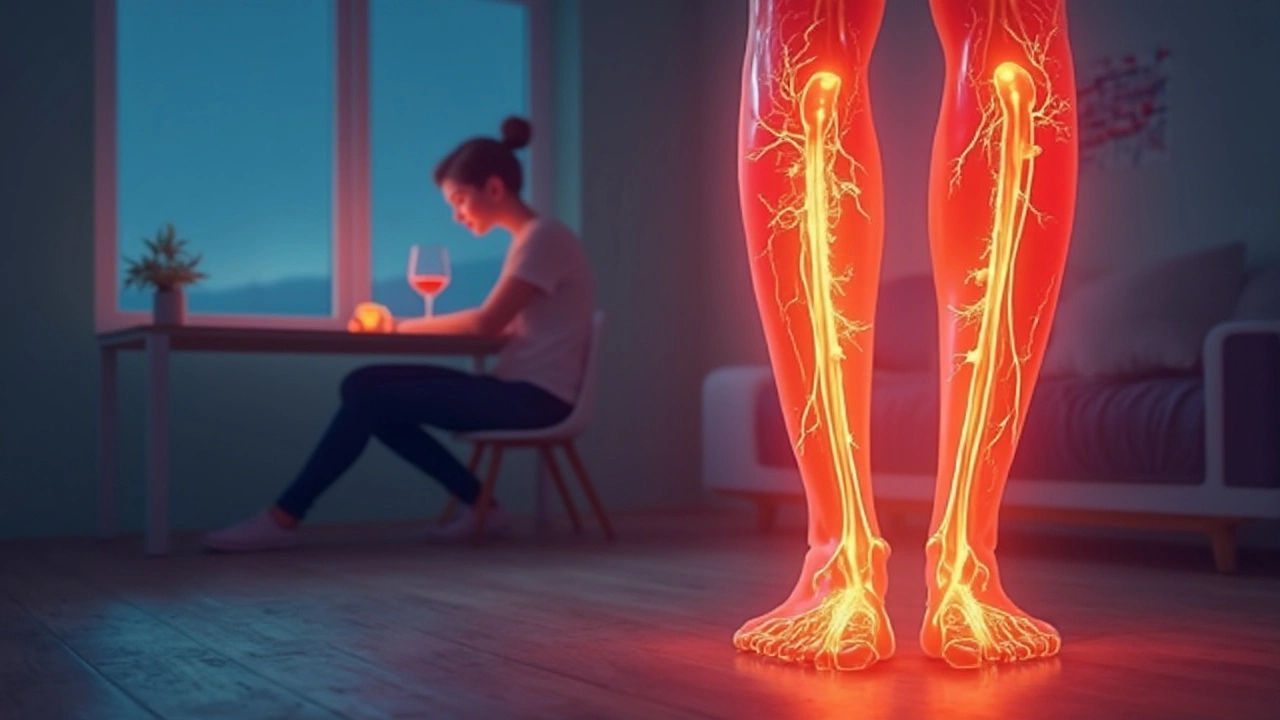Ever felt a painful ache in your calf after a long flight? That could be more than a sore muscle—it might be a blood clot forming. Blood clots, or thrombi, are clumps of blood that harden and block vessels. When they happen in deep veins, especially in the legs, doctors call it DVT (deep vein thrombosis). If a clot breaks loose and travels to the lungs, it becomes a pulmonary embolism, a life‑threatening emergency.
Spotting a clot early can save you a lot of trouble. Look for swelling, warmth, and a tight feeling in one leg. The skin may turn red or look shiny. Some people feel a cramp‑like pain that gets worse when they stand. If you notice sudden shortness of breath, chest pain that worsens with a deep breath, or a rapid heartbeat, call emergency services right away—those could be signs of a clot that’s traveled to your lungs.
Anything that slows blood flow can set the stage for a clot. Long trips, sitting at a desk for hours, or wearing tight clothing can all reduce circulation. Surgery—especially joint replacements—creates tissue damage that triggers clotting. Pregnancy, hormone therapy, and birth control pills raise clot risk because hormones affect how blood clumps together. Smoking, obesity, and a family history of clotting disorders also play a big role. Even medical conditions like cancer or heart failure can increase the odds.
Staying active is the easiest defense. Walk around every hour if you’re on a plane or stuck at a desk. Simple calf‑raises or ankle circles keep blood moving. Drink plenty of water; dehydration thickens blood and makes clots more likely. If you’re on a long car ride, open the window or stop to stretch your legs.
Compression socks are another handy tool. They apply gentle pressure that pushes blood up toward the heart. If you’re recovering from surgery, your doctor might suggest blood‑thinning meds—take them exactly as prescribed. For those with a known clotting disorder, regular check‑ups and possibly lifelong medication may be needed.
If you notice any of the warning signs, don’t wait. A quick visit to your doctor can get you an ultrasound or blood test to confirm a clot. Treatment usually involves anticoagulants—drugs that thin the blood and prevent the clot from growing. In severe cases, doctors may need to break up the clot with a procedure called thrombectomy.
Remember, most clots are treatable if caught early. Knowing the risk factors and listening to your body are the best defenses.
Blood clots can feel scary, but with a few everyday habits—moving regularly, staying hydrated, and watching for symptoms—you can lower your risk dramatically. Keep this guide handy, share it with friends who travel a lot, and stay proactive about your circulatory health.

This article breaks down how drinking alcohol can affect your risk of deep vein thrombosis, which is when clots form deep in your veins. It looks at how alcohol changes your blood, how lifestyle choices play into DVT risk, and what you need to watch for. You’ll find practical tips for lowering your risk if you do drink. Plus, get clear answers to common questions and misleading myths about alcohol and blood clots. If you want to make sense of all the mixed messages, this guide gives you the facts without the fluff.
read more